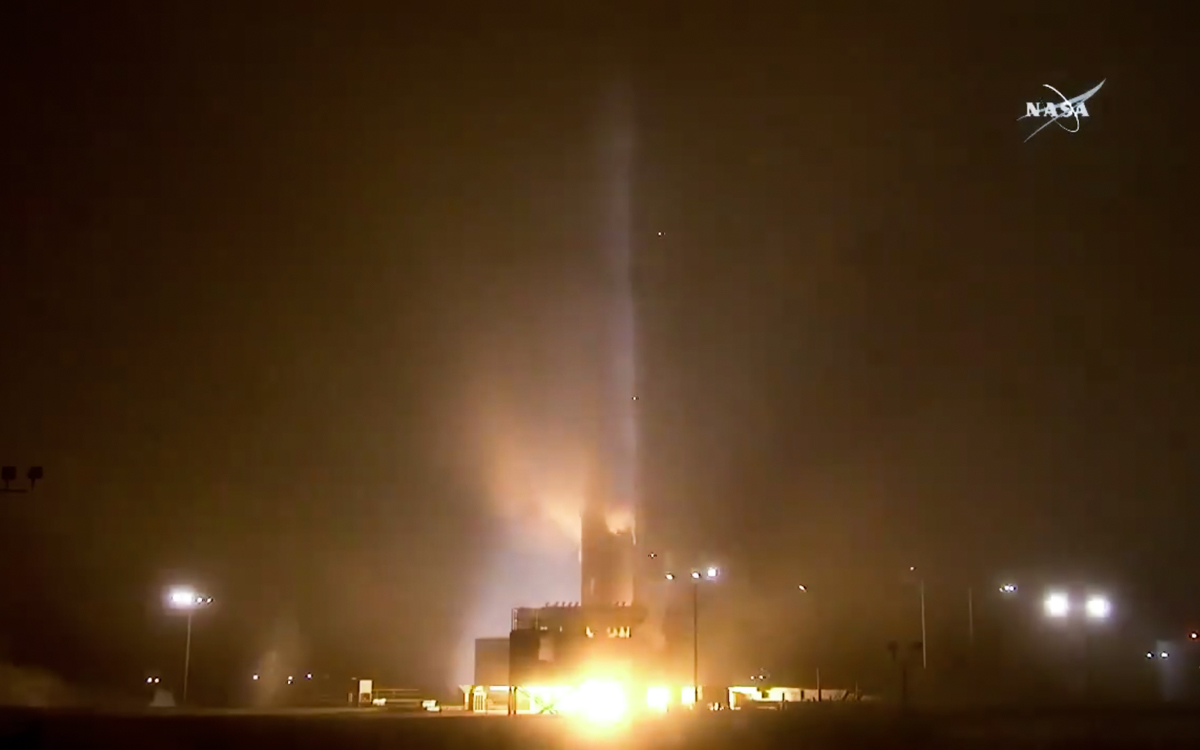
NASA’s next highly-anticipated mission to land on Mars took off early this morning, May 5, atop a United Launch Alliance Atlas V “401” rocket from Vandenberg AFB, California, but unfortunately nobody saw it because of fog. Lifting off at 4:05 a.m. PDT, NASA’s Interior Exploration using Seismic Investigations, Geodesy and Heat Transport spacecraft, or InSight, took a southerly trajectory and climbed out over the Channel Islands on its way to Elysium Planitia on the surface of the Red Planet, about 375 miles from Gale Crater, where the rover Curiosity is currently exploring.
Except InSight won’t actually explore the surface like Curiosity at all, but instead will investigate the interior of the planet from a flat-smooth plain just north of the equator (centered at about 4.5 degrees north latitude and 135.9 degrees east longitude).
It will be the first mission to do so too. It will measure the planet’s heat output and listen for marsquakes, while using the seismic waves generated by marsquakes to develop a map of the planet’s deep interior, resulting in a better understanding of Mars’ formation and therefore providing a better understanding of how other rocky planets, including our own, were created.
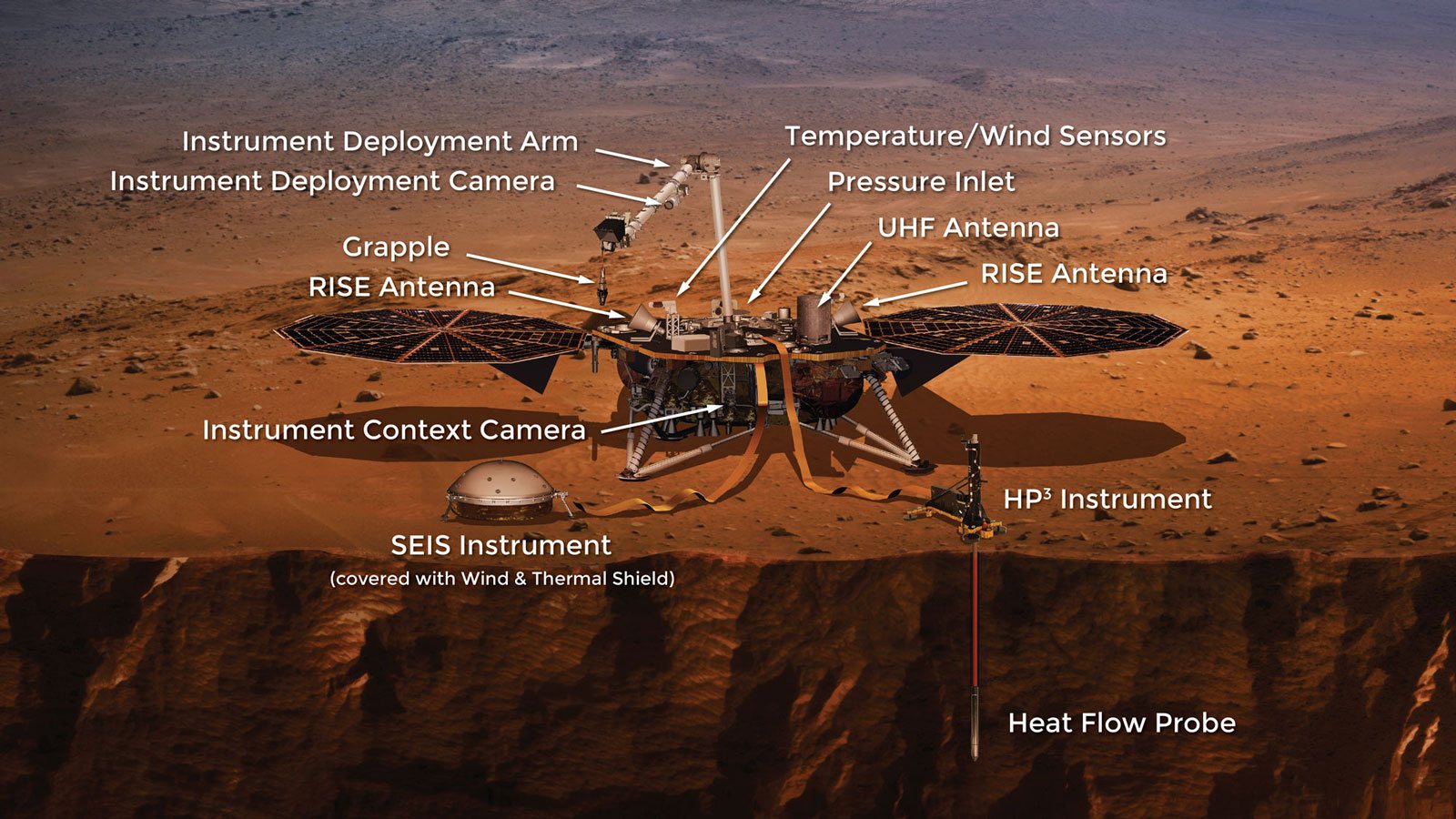
“The United States continues to lead the way to Mars with this next exciting mission to study the Red Planet’s core and geological processes,” said NASA Administrator Jim Bridenstine. “I want to congratulate all the teams from NASA and our international partners who made this accomplishment possible. As we continue to gain momentum in our work to send astronauts back to the Moon and on to Mars, missions like InSight are going to prove invaluable.”
Riding the rocket’s Centaur second stage, InSight reached orbit 13 minutes and 16 seconds after launch. Seventy-nine minutes later, the Centaur ignited a second time, sending InSight on a trajectory towards Mars before separating from the Centaur 14 minutes later – 93 minutes after launch.
“The Kennedy Space Center and ULA teams gave us a great ride today and started InSight on our six-and-a-half-month journey to Mars,” said Tom Hoffman, InSight project manager at NASA’s Jet Propulsion Laboratory (JPL) in Pasadena, California. “We’ve received positive indication the InSight spacecraft is in good health and we are all excited to be going to Mars once again to do groundbreaking science.”
Once on Mars, the mission is expected to last at least 708 sols (Mars days, equivalent to 728 Earth days). But if history is any indication, assuming the spacecrafts lands in tact, it will likely operate much, much longer.
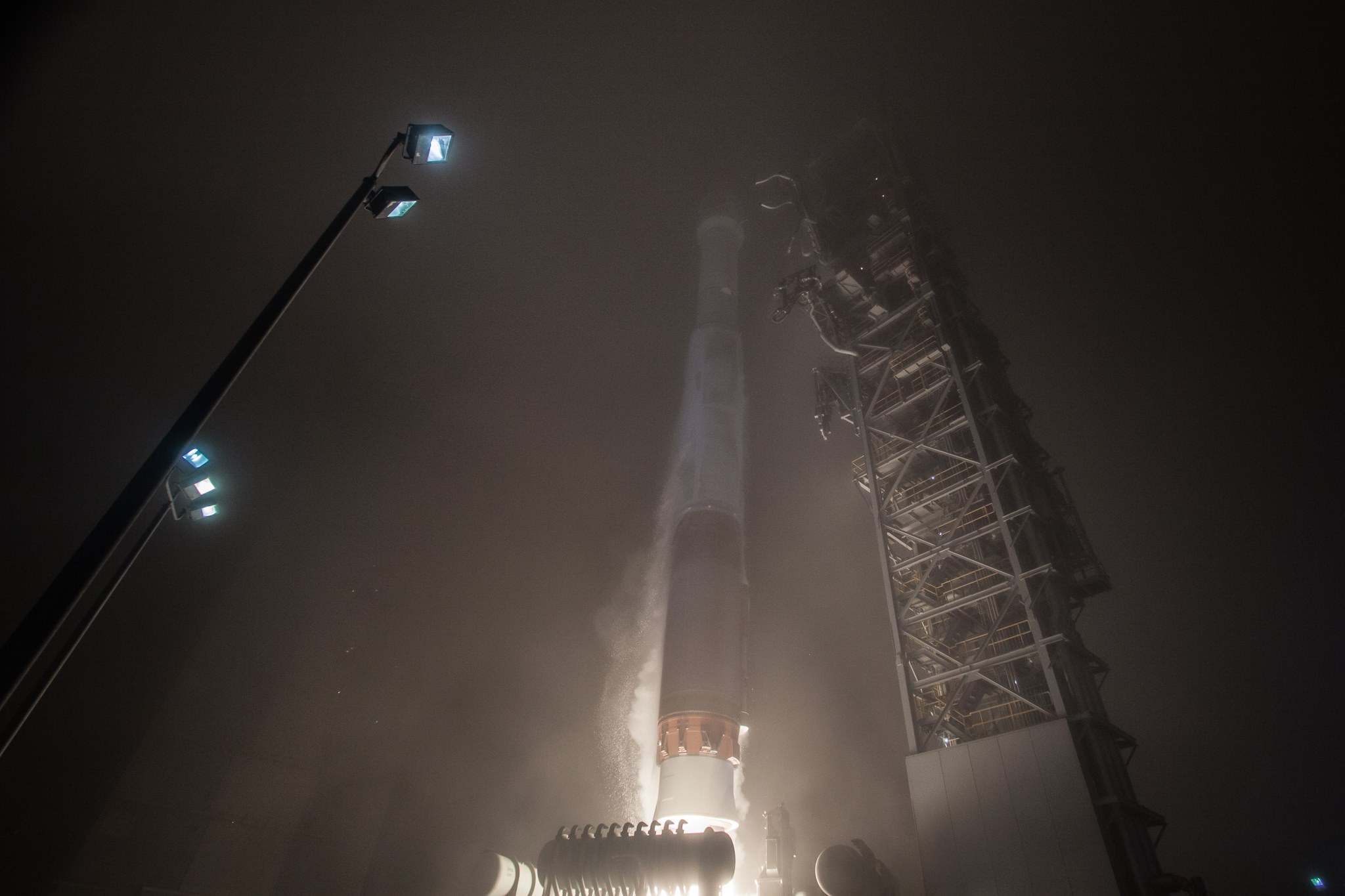
So just what makes this mission so unique? The answer is in the full name – Interior Exploration using Seismic Investigations, Geodesy and Heat Transport (InSight). InSight will land in a fairly flat region by necessity, which may seem disappointing compared to the stunning scenery seen by the current rovers Curiosity and Opportunity, but for this mission, the science is mostly underground. The lander will be the first robotic mission to explore what is inside of Mars rather than just what is on the surface, using various instruments to examine the crust, mantle and core of the planet. It will look at Mars’ “vital signs” – its “pulse” (seismology), “temperature” (heat flow) and “reflexes” (precision tracking). It will search for signs of current tectonic activity (marsquakes) and meteorite impacts. InSight’s seismometer, the Seismic Experiment for Interior Structure (SEIS) could even detect liquid water or active volcanic activity beneath the surface. Scientists don’t yet know just how active Mars is deep underground, but InSight will help to finally answer many of those questions. This will also aid researchers in understanding how smaller rocky planets like Mars and Earth form and evolve, even those in other solar systems.
“InSight’s investigation of the Red Planet’s interior is designed to increase understanding of how all rocky planets, including Earth, formed and evolved,” said Bruce Banerdt, InSight Principal Investigator at NASA’s Jet Propulsion Laboratory (JPL) in Pasadena, Calif. “Mars retains evidence about the rocky planets’ early development that has been erased on Earth by internal churning Mars lacks. Gaining information about the core, mantle and crust of Mars is a high priority for planetary science, and InSight was built to accomplish this.”
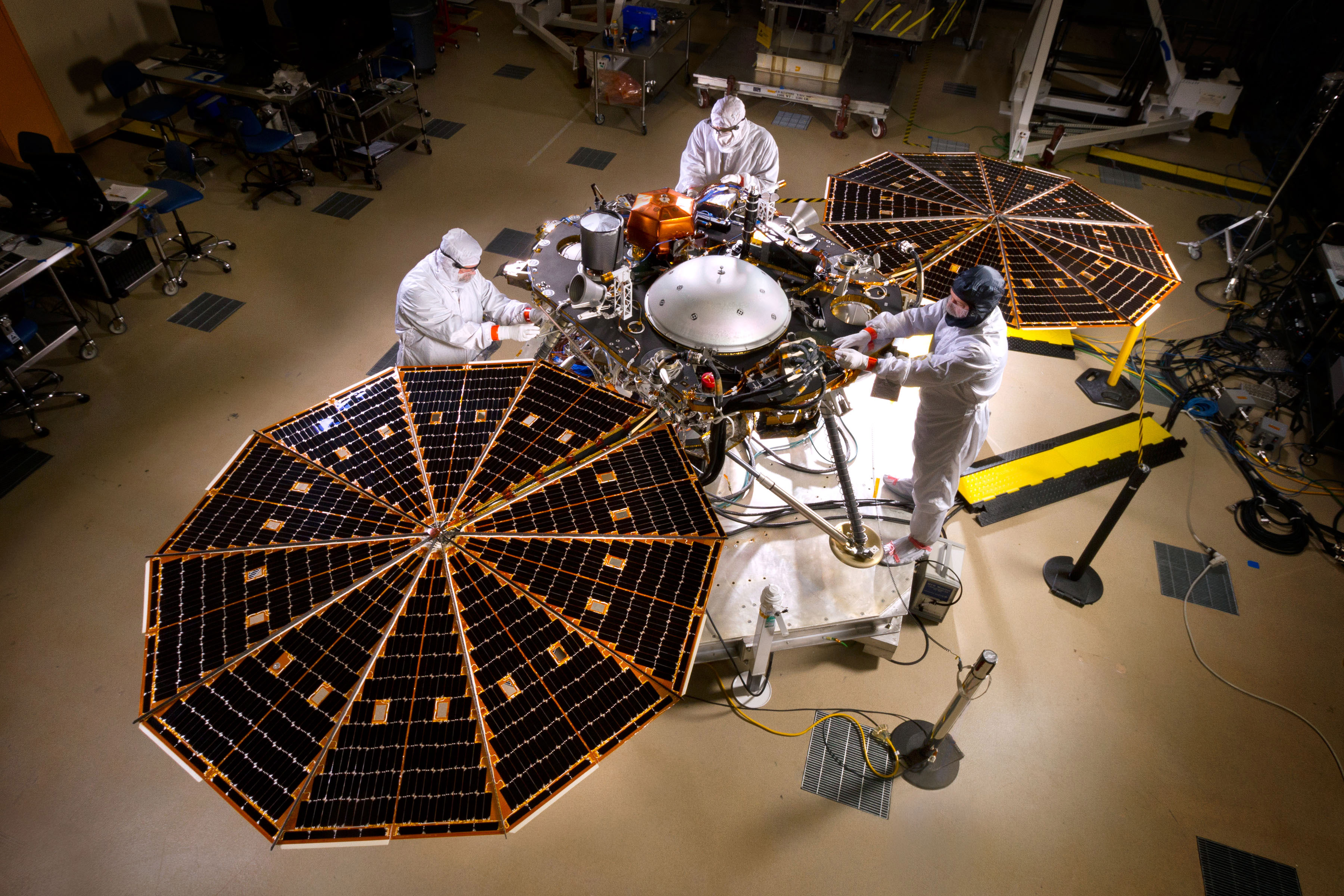
The main objectives of the mission include:
- Determine the size, composition, physical state (liquid/solid) of the Martian core
- Determine the thickness and structure of the Martian crust
- Determine the composition and structure of the Martian mantle
- Determine the thermal state of Mars’ interior
- Measure the magnitude, rate and geographical distribution of Mars’ internal seismic activity
- Measure the rate of meteorite impacts on the surface of Mars
The design of InSight is very similar to a previous lander, the Mars Phoenix Lander, which landed near the Martian north pole in 2007, and utilizes much of the same technology. The Phoenix mission was very successful, including finding patches of water ice only a few centimeters below the surface. Unusual droplets on one of the lander’s legs are even thought to have been small drops of very briny water, something never seen before on Mars.
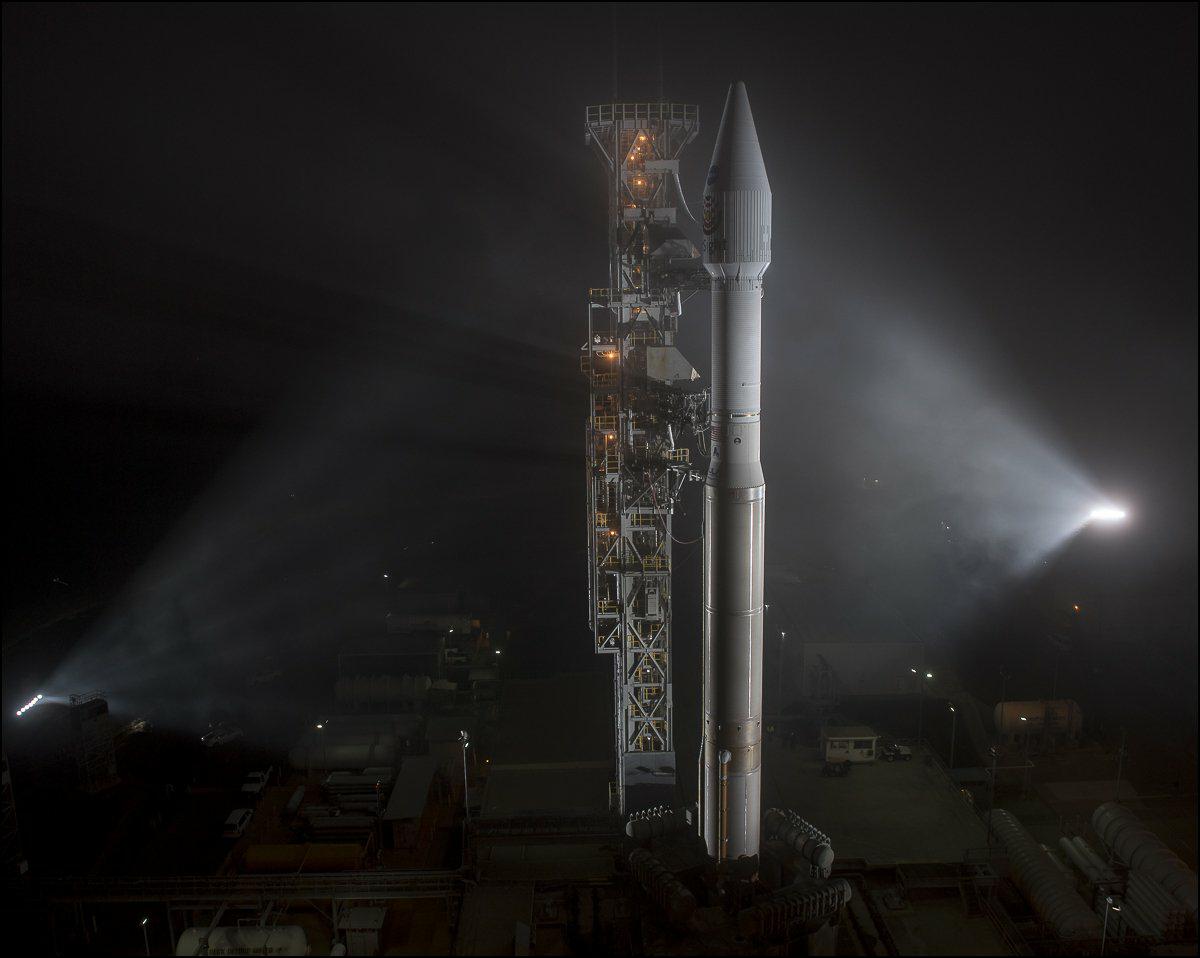
InSight is not very large, but it carries an impressive array of instruments, including:
- Grapple – Mechanism at the end of the IDA that grips the instruments during deployment
- Heat Flow Probe – Hammering mechanism that pulls the temperature sensors down into the regolith
- HP3 – Heat Flow and Physical Properties Package, the heat flow experiment
- IDC – Instrument Deployment Camera, pointable medium-resolution camera
- IDA – Instrument Deployment Arm
- ICC – Instrument Context Camera, fixed wide-angle camera
- Pressure Inlet – Wind-shielded opening for pressure sensor
- RISE Antenna – X-band radio antenna for the Rotation and Interior Structure Experiment
- SEIS – Seismic Experiment for Interior Structure, the seismometer
- Tethers – Cables carrying electrical power, commands and data between the lander and instruments
- TWINS – Temperature and Winds for InSight, environmental sensors
- UHF Antenna – Antenna used for communication with orbital relay spacecraft
- WTS – Wind and Thermal Shield protecting the seismometer from the environment
Besides InSight itself, two other probes joined along for the ride to Mars – two briefcase-size satellites, or CubeSats, called Mars Cube One (MarCO), and nicknamed “Wall-E” and “Eva.” They will travel behind InSight and arrive just in time for the landing. MarCO will act as a relay, sending data back to Earth about the entry, descent and landing of InSight, perhaps faster than ever before. Even if they fail for some reason, InSight can still use the Mars Reconnaissance Orbiter as a relay to Earth.
“These are our scouts,” said Andy Klesh of NASA’s Jet Propulsion Laboratory (JPL), and MarCO’s chief engineer. “CubeSats haven’t had to survive the intense radiation of a trip to deep space before or use propulsion to point their way towards Mars. We hope to blaze that trail.”
Geoff Yoder, acting associate administrator for the Science Mission Directorate in Washington, sums up the mission this way:
“Our robotic scientific explorers such as InSight are paving the way toward an ambitious journey to send humans to the Red Planet. It’s gratifying that we are moving forward with this important mission to help us better understand the origins of Mars and all the rocky planets, including Earth.”
We’ll be sure to update as the mission progresses approaching November’s landing.
– Written by Mike Killian and Paul Scott Anderson
.
FOLLOW AmericaSpace on Facebook!
.




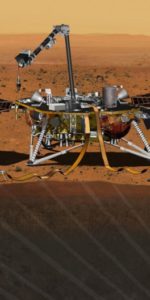
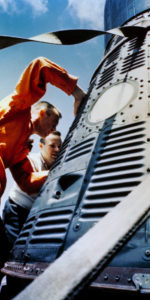
Well, You CAN’T Beat Mother Nature. She has an AGGRAVATING Sense of Humor, but then, She IS Mom.
In my view, that the Mission got off the ground and on the way is far more Important. There are literally thousands of things that could have gone wrong but none did.
VAFBCA would be GREAT PLACE for SpaceX to launch a Mars Mission Developmental Flight with a Falcon Heavy.
As Tory Bruno commented post launch: “There’s an old saying in American rocketry: I went out to VAFB and heard a great launch!”